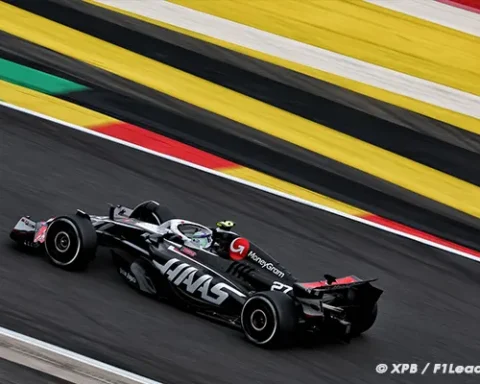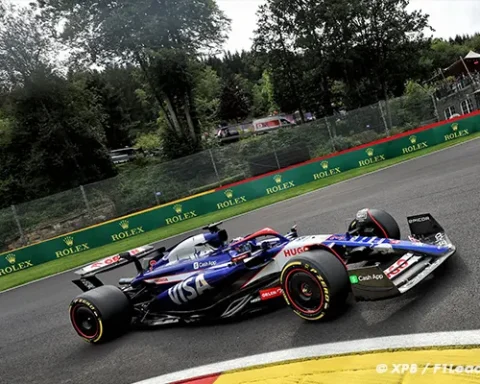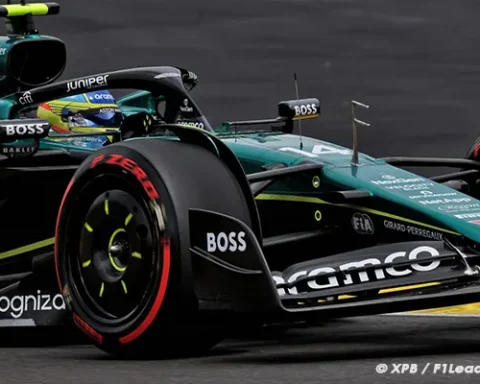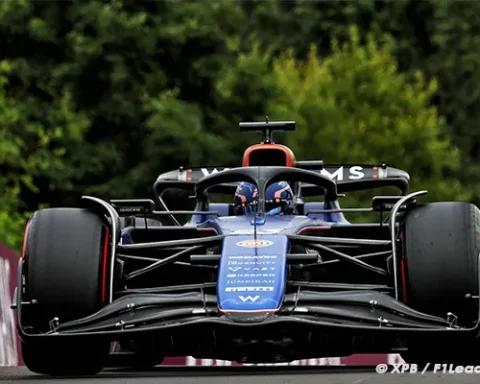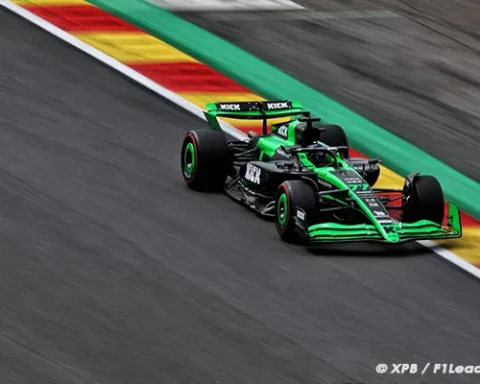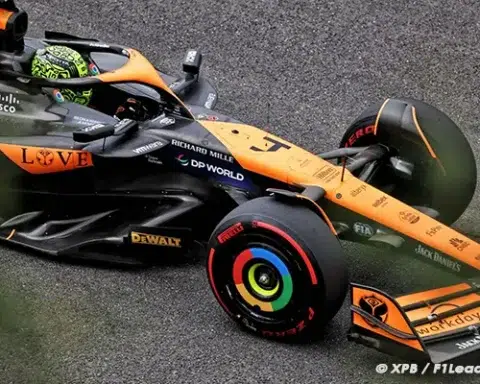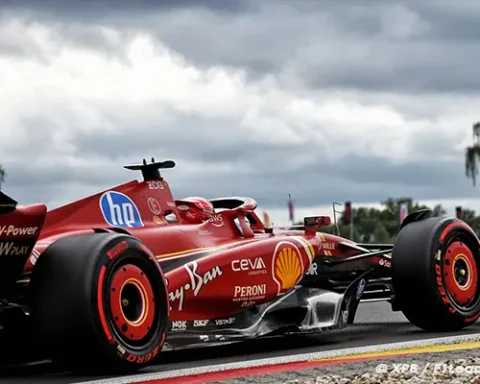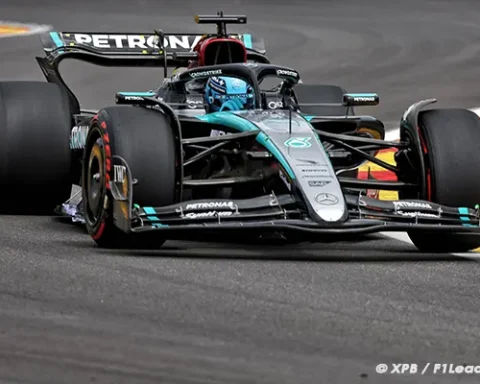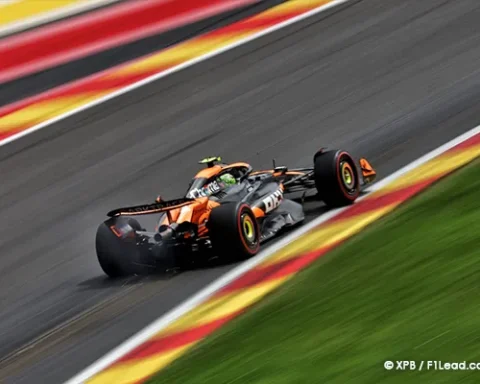In 2023, F1 experienced notable highs and lows, with the FIA’s role central to key events. From safety concerns to rule enforcement, their impact on the sport was undeniable and widely debated.
In 2023, a lot went right in Formula 1, but it’s hard to deny that sometimes things went wrong. A loose manhole cover and bad luck for Carlos Sainz in Las Vegas, the major chaos during the Australian Grand Prix, and an unwarranted reprimand for the Wolff couple are just a few examples of things that could have been better, and they all have one thing in common.
The FIA played a significant role in each of these instances, which was true in several cases throughout the season. A governing body is naturally crucial in a sport like Formula 1, where almost everything imaginable seems possible. Yet, I can’t help but wonder if the FIA itself still knows what’s really going on.
There’s much to be said about the role of the FIA, but one thing is certain: the importance of this governing body is indisputable. Considering all the regulations that come with motorsport, especially with Formula 1 as its pinnacle, it’s naturally essential to have a neutral and overarching organization to steer everything in the right direction.
Let’s face it, the FIA does a lot more than just impose sanctions on parties who don’t adhere to the defined rules. In fact, this governing body is indispensable for Formula 1, even though many still regularly question its necessity.
Whether we like it or not, Formula 1 remains a sport where drivers gamble with their lives as if they have nine to spare. This is all part of the job’s risk, and it’s unlikely that anyone would object to that, but it never hurts to prioritize safety.
You probably guessed it: ensuring safety is one of the primary responsibilities that the FIA undertakes during a race weekend. And rightly so, because the world of motorsport has, in recent years, experienced too many incidents that I wouldn’t wish on my worst enemy.
In my opinion, the FIA isn’t doing too badly in terms of safety. I vividly recall the controversy surrounding the introduction of the halo: the so-called ‘flip-flop’ above the cockpit of the cars was criticized for going against the aesthetics of motorsport.
I must admit, I remained skeptical about this development for a long time. However, how grateful I was that Romain Grosjean’s car had a halo during the Bahrain Grand Prix in 2020, when he was involved in a nearly fatal crash into the barrier. The halo saved the day, and thanks to that guardian angel on his shoulder and the unsightly ‘flip-flop,’ the Frenchman is able to recount the story himself today.
In the context of safety, we must also not forget that the governing body closely monitors the safety of the fans. The organizers of the Australian Grand Prix received a significant reprimand after the fiasco of 2023, where fans, without any structure or space, recklessly stormed onto the track.
While I don’t always agree with the decisions made by the FIA, one thing I do know: when it comes to safety, we should be thankful to have a governing body that dares to stand up against all odds to keep safety a top priority.
F1 Safety and Rules : A Look at the Impact of the FIA in 2024. F1 Safety and Rules : A Look at the Impact of the FIA in 2024
The FIA seems to be regaining its footing in some areas.
However, I must admit that my praise for the FIA more or less ends there. In my view, there are indeed moments when the FIA does exactly what it’s supposed to do, but ultimately, the governing body is not much different from a football referee. Regulations and opinions are almost inseparably intertwined, and this is no different in motorsport.
The list of examples is nearly endless, but a lot happened in 2023 that virtually every Formula 1 fan had an opinion on. 2023 was not only the season of Max Verstappen‘s and Red Bull Racing‘s dominance but also the season of a loose manhole cover and unlucky Sainz in Las Vegas, three red flags during the Australian Grand Prix, the disqualifications of Lewis Hamilton and Charles Leclerc in Austin, and the incident between the FIA and the Wolff couple.
Regarding the disqualifications of Hamilton and Leclerc, the conversation is probably over quickly, as the final decision made by the FIA was not too bad. I have mentioned it before, but to this day, I am greatly disappointed that there was no room at that time to thoroughly check all the cars.
The race weekend in Mexico would follow the next week, so there was hardly any leeway due to the crowded calendar. Nonetheless, I find it regrettable that the organization, which exists precisely to ensure the rules are followed, does not have the necessary time and space to do so as completely as possible.
Indeed, it’s a problem that inevitably falls secondary to other situations, but if there’s so much advantage in bending the rules just once, I’m very curious about what would have happened if the FIA had the opportunity to inspect all twenty cars.
With this perspective in mind, you can imagine my satisfied smile when I learned that the governing body is considering at least reviewing the situation in light of the new regulations set for 2026. In other words: it’s encouraging to see that the FIA seems to be making the best of what they have, and that offers hope and prospects for the future.
F1 Safety and Rules : A Look at the Impact of the FIA in 2024. F1 Safety and Rules : A Look at the Impact of the FIA in 2024
The chaos in Australia primarily demonstrates inconsistency.
Yet, we cannot and should not deny that the FIA, somewhat inadvertently, often undermined its own rules. To dive right back into the past: since the start of the season, the Australian Grand Prix has been at the top of the list of races with the most question marks.
Many talked about inconsistency following the race Down Under, and I tend to agree. The race directors waved the red flag no less than three times during the race, though I have no doubts about its necessity. In terms of racing action, I believe the FIA handled things well, as I don’t expect fans to say no to a sprint race within a main race.
However, the term ‘inconsistency’ particularly came up when the chaos really escalated in lap 54, as Kevin Magnussen suddenly crashed his car into the wall.
After the second standing restart, drivers dropped out en masse: both Alpine drivers encountered each other, Fernando Alonso and Carlos Sainz got into a Spanish tangle, and rookies Nyck de Vries and Logan Sargeant couldn’t avoid each other either.
Consequently, the red flag was waved for the third time, and after much deliberation, the race directors decided to send the drivers back out to complete the final lap behind the Safety Car.
But the FIA wouldn’t be the FIA if there weren’t complications with that decision. With a finish behind the Safety Car, considering the chaos of the previous restart, there was a lot of uncertainty about the new starting order.
Here, the FIA eventually erred, as by maintaining the grid from the second restart, several drivers were disadvantaged, losing positions they had gained after the second restart. By choosing this grid, the FIA somewhat contradicted the regulations, but this can be overlooked as they made a choice that better suited the situation.
However, the inconsistency became evident when the FIA reviewed the incidents after the second restart. Sainz received a five-second penalty for the clash with Alonso, while the other two incidents, which in my opinion were possibly even more severe, went unpunished.
It can certainly be argued that there was again a lack of time and space, as the incident between Sainz and Alonso was the only one within the top ten. Yet, in my view, it shows inconsistency that the Spanish drivers are investigated because points are at stake, while incidents occurring further back were not even considered.
More on today’s FIA news
- ReadMore>F1: Rising Regulatory Controversies Demand Urgent Action
- ReadMore>Formula 1 and FIA: Tensions, Governance, and the Future of Racing
- ReadMore>Zak Brown Urges Unified FIA-F1 Relations Amid Tensions
- ReadMore>Wolff Concerned Over FIA’s Stability and Transparency
A loose manhole cover cast a shadow over the spectacle in Las Vegas.
About half a year after the tension, excitement, and inconsistency in Australia, the Las Vegas Grand Prix followed. Let’s be honest: few people were fond of the new circuit, and many were not looking forward to the emphasis on entertainment the city would bring.
In the end, the street circuit did produce a very special and exciting race, but what preceded it looked far from favorable for the FIA. Due to a loose manhole cover, Sainz crashed into the wall just eight minutes into the first practice session, leading to a lengthy red flag and the session not being restarted.
The damage to the circuit was assessed, and for safety reasons, it was decided to proceed with the second practice later in the night, though without spectators.
As I previously mentioned, in my opinion, the FIA generally takes safety into account well, although they sometimes drop the ball in this regard. The absence of spectators during the second practice was understandably frustrating for those present, but I could somewhat comprehend the necessity of it. However, to this day, I cannot understand why that manhole cover was loose in the first place.
F1 Safety and Rules : A Look at the Impact of the FIA in 2024. F1 Safety and Rules : A Look at the Impact of the FIA in 2024
Formula 1 and the FIA had ample time to inspect the track beforehand, and in my view, they needed to. A street circuit brings different dangers than a traditional circuit, so I found it extremely disappointing and even alarming to see that the governing body and the race organization had overlooked such a crucial point.
My jaw truly dropped in astonishment when I heard that Sainz would also receive a grid penalty for the incident. The Spaniard drove over a loose manhole cover without his knowledge, leading to a dangerous situation, but was then penalized because his car needed repairs due to damage he hadn’t caused.
Yes, the FIA was just following the rules by not making an exception. But when even Toto Wolff doesn’t understand why an exception couldn’t be made under these ‘very unusual, external circumstances,’ as Ferrari described them, I think the governing body may have taken a wrong turn somewhere.
The FIA also plays judge outside the track.
Just when we thought the chaos of 2023 had finally ended, the FIA delivered a kind of coup de grâce in December. Toto and Susie Wolff became the latest subjects of an investigation by the FIA’s Compliance department for suspected conflict of interest.
Of course, it would be madness for me to comment on the facts and details of this case, as I simply don’t have that information. What I do know, however, is that the whole situation quickly turned into a farce for me. Don’t get me wrong, it’s great that the FIA takes such incidents seriously at first. But shortly after the governing body’s statement, one detail after another came to light, and the situation became increasingly complicated.
Firstly, Formula 1 itself announced it was unaware of the Compliance department’s investigation, which, in my opinion, says a lot about the communication and collaboration between the two parties. But my jaw really dropped when all the teams published the same statement, uniting the participating teams in one of the world’s most competitive sports – a feat achieved single-handedly by the FIA.
However, the real shock came a few days later when a message was released that the governing body would not pursue the investigation further. To say this message didn’t sit well with everyone is an understatement. The Wolffs quickly considered legal action, but the real final blow came from the Formula 1 fans: due to the proceedings, the FIA was mainly labeled as unprofessional. I can’t deny it: I share that opinion wholeheartedly.
F1 Safety and Rules : A Look at the Impact of the FIA in 2024. F1 Safety and Rules : A Look at the Impact of the FIA in 2024
Safety with a touch of empathy.
The aforementioned situations were, of course, just four examples from a season filled with controversy and subjectivity, but these snippets illustrate the difficult position the FIA finds itself in.
In the case of the Australian Grand Prix, the governing body somewhat flouted the regulations, creating confusion, while in Las Vegas, they adhered to the rules, even though, in my opinion, they might have (and perhaps should have) deviated a bit from them. But for every winner, there’s a loser, so I expect the debate over the FIA and the functioning of the governing body will remain a hot topic for a long time. After all, everyone will have an opinion on the decisions made, and the organization itself ultimately needs to navigate its way through these.
The only question remaining is simple: can the FIA ever get it right? To be completely honest, I have no doubt about it, as the governing body has shown that it possesses the right resources to make the right decisions.
However, I do think a thorough evaluation of which rules are necessary and which regulations could and should be adjusted is crucial. In the case of the loose manhole cover in Las Vegas, the FIA was so diligent in following the rules that they perhaps lost sight of the human aspect of the sport.
The governing body couldn’t classify this incident as force majeure because the regulations didn’t incorporate mishaps on the track. This was, of course, unfortunate for Sainz, but these are precisely the types of rules that the FIA could reconsider to make the sport more human.
Overall, it’s always easy to complain, but in my opinion, it increasingly seems that the FIA is on the right track in steering the whole complex of rules and regulations in the right direction. There will always be people who continue to complain, as that’s just human nature, but there’s one thing I can certainly appreciate about the FIA.
Even when all the rules are flouted and the decisions made seem to make no sense, the governing body still considers the safety of the drivers, team members, and fans in the stands. In my view, there’s simply nothing more important than that.
F1 Safety and Rules : A Look at the Impact of the FIA in 2024. F1 Safety and Rules : A Look at the Impact of the FIA in 2024
- ReadMore>F1 2024: Tense Questions Shaping the Season
- Following us on Facebook and Twitter.

